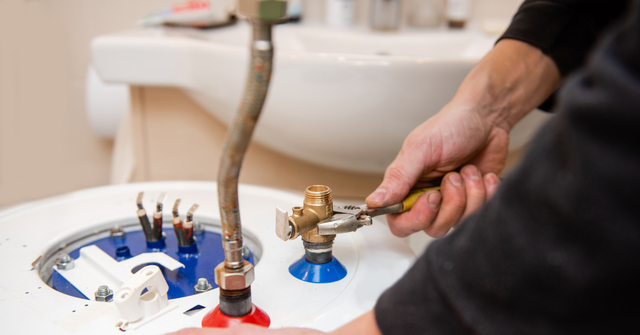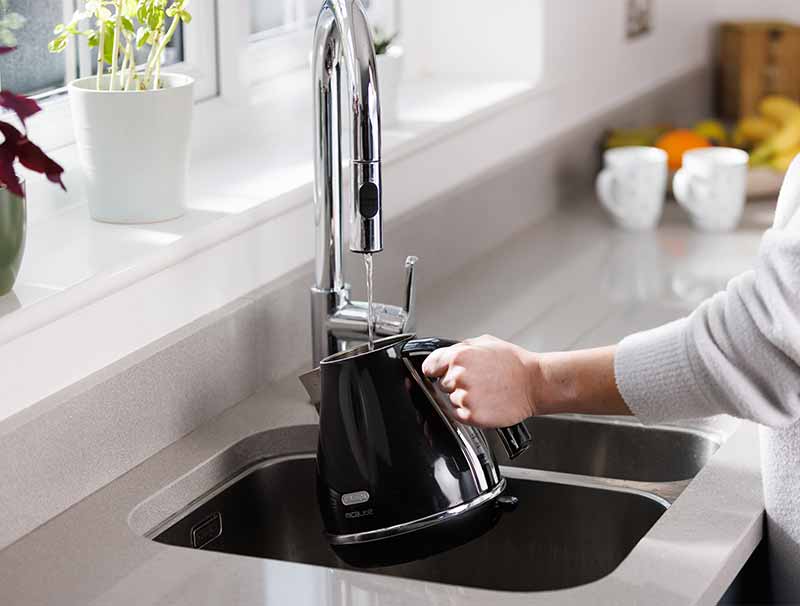The Definitive Manual to Solving Low Water Pressure in Your Home
The Definitive Manual to Solving Low Water Pressure in Your Home
Blog Article
What are your concepts on 9 Reasons for Low Water Pressure in Your House?

Low tide pressure in your home can be a frustrating problem, impacting every little thing from showering to washing dishes. If you're experiencing weak water flow, there are numerous possible reasons and solutions to explore. In this guide, we'll review typical reasons for low water pressure and functional steps to address the issue efficiently.
Intro to Low Water Pressure
Low water stress happens when the circulation of water from your faucets, showers, and various other fixtures is weak than common. This can make daily tasks more challenging and much less effective. Understanding the causes of low water stress is vital to locating the ideal remedy.
Common Causes of Low Water Pressure
Pipe Obstructions
Gradually, pipelines can end up being blocked with natural resource, sediment, or debris, restricting the circulation of water. This is a common concern in older homes with galvanized steel pipelines.
Corrosion
Deterioration within pipes can bring about leaks and reduced water pressure. Rust build-up can restrict water circulation, particularly in maturing plumbing systems.
Faulty Stress Regulatory Authorities
Stress regulatory authorities are in charge of preserving constant water pressure in your home. If they malfunction, it can cause low water pressure or uneven flow throughout your home.
Community Water Issues
Often, the issue lies outside your home. Local supply of water issues, such as main line leaks or upkeep job, can briefly lower water pressure in your area.
Just How to Diagnose Low Water Pressure
Examining Faucets and Components
Begin by evaluating the water stress at different faucets and fixtures throughout your home. If the concern is isolated to particular locations, it may indicate localized issues.
Inspecting Pipes
Inspect noticeable pipes for indicators of leakages, corrosion, or blockages. Take note of any type of unusual noises, such as knocking or rattling pipes, which might show issues within the plumbing system.
Consulting with a Plumber
If you're not able to determine the cause of low water stress, consider working with a specialist plumber to carry out an extensive evaluation. They can determine underlying issues and suggest ideal solutions.
DIY Solutions to Fix Low Water Stress
Cleaning Aerators and Showerheads
Natural resources can gather in aerators and showerheads, minimizing water circulation. Eliminate and cleanse these parts routinely to enhance water pressure.
Flushing Hot Water Heater
Sediment buildup in the water heater can limit circulation and decrease efficiency. Purging the tank regularly assists get rid of sediment and keep optimum performance.
Checking Stress Regulator
Ensure that the stress regulator is working appropriately. Adjusting or replacing the regulatory authority can help bring back correct water pressure throughout your home.
Clearing Clogs in Piping
For small blockages, try using a plumbing snake or chemical drainpipe cleaner to clear obstructions in pipes. Beware when using chemicals and follow security guidelines.
When to Call a Specialist Plumber
If DIY efforts fail to solve the problem or if you think significant plumbing problems, it's best to look for assistance from a qualified plumber. They have the competence and devices to address intricate problems safely and successfully.
Preventive Measures to Keep Water Stress
Regular Maintenance
Arrange routine maintenance for your plumbing system to avoid issues such as corrosion, leaks, and obstructions. Attending to small troubles early can assist stay clear of even more substantial repair services later on.
Setting Up a Pressure Booster
Consider mounting a stress booster pump to improve water pressure in locations with continually low flow. This can be especially beneficial for multi-story homes or residential properties with high-demand components.
Tracking Water Use
Be mindful of water use habits and prevent ill-using the plumbing system. Simple modifications, such as staggering showers and laundry lots, can assist maintain adequate water pressure.
Conclusion
Handling low water pressure can be frustrating, but identifying the underlying causes and applying appropriate options can restore optimal flow throughout your home. Whether it's cleansing aerators, evaluating pipelines, or consulting with a plumber, taking positive steps can ensure a stable supply of water for your daily demands.
FOUR WAYS TO FIX LOW WATER PRESSURE NOW
Turning on a shower or faucet only to find the water comes out in a sad, slow drizzle is never a good feeling. How exactly are you supposed to wash a pan or take a quick shower when it takes 10 minutes just to rinse off a little soap? The good news is that when your water pressure is bad, there's always a cause: typically one that can be easily fixed. Here are some of the most common causes of low pressure and what you can do to fix the issue:
DEBRIS AND MINERAL DEPOSIT BUILDUPS
If you notice low water pressure from just one or two of the fixtures in your house, the problem likely has to do with debris buildup. Water is full of minerals and other debris, all of which can accumulate in your pipes and on your fixtures. This can cause a blockage that affects how much water flows through. To fix this, try filling a small plastic bag with white vinegar, and use a rubber band to hang it around your showerhead or faucet. Let the head of the fixture soak for a few hours, and the vinegar should loosen the deposits.
WATER LEAKS
Leaks are another common cause of low water pressure. If water is flowing out of your plumbing through a hole or crack before it can reach your fixture, the pressure coming out of the faucet or showerhead will be lower. A plumbing professional is your best bet for finding and repairing a leak in your water supply pipes.
Leaks are another common cause of low water pressure. If water is flowing out of your plumbing through a hole or crack before it can reach your fixture, the pressure coming out of the faucet or showerhead will be lower. A plumbing professional is your best bet for finding and repairing a leak in your water supply pipes.
FOUR WAYS TO FIX LOW WATER PRESSURE NOW
Turning on a shower or faucet only to find the water comes out in a sad, slow drizzle is never a good feeling. How exactly are you supposed to wash a pan or take a quick shower when it takes 10 minutes just to rinse off a little soap? The good news is that when your water pressure is bad, there's always a cause: typically one that can be easily fixed. Here are some of the most common causes of low pressure and what you can do to fix the issue:
DEBRIS AND MINERAL DEPOSIT BUILDUPS
If you notice low water pressure from just one or two of the fixtures in your house, the problem likely has to do with debris buildup. Water is full of minerals and other debris, all of which can accumulate in your pipes and on your fixtures. This can cause a blockage that affects how much water flows through. To fix this, try filling a small plastic bag with white vinegar, and use a rubber band to hang it around your showerhead or faucet. Let the head of the fixture soak for a few hours, and the vinegar should loosen the deposits.
WATER LEAKS
Leaks are another common cause of low water pressure. If water is flowing out of your plumbing through a hole or crack before it can reach your fixture, the pressure coming out of the faucet or showerhead will be lower. A plumbing professional is your best bet for finding and repairing a leak in your water supply pipes.
Leaks are another common cause of low water pressure. If water is flowing out of your plumbing through a hole or crack before it can reach your fixture, the pressure coming out of the faucet or showerhead will be lower. A plumbing professional is your best bet for finding and repairing a leak in your water supply pipes.
A VALVE ISSUE
If you have low water pressure throughout your home, check your main shut-off valve to make sure it's completely open. You may also want to see if there's a pressure-reducing valve installed. If there is, have a plumber help you adjust the settings to get the pressure you're looking for.
OTHERS USING WATER
Believe it or not, your low water pressure could be caused by your neighbors. If you notice low pressure at certain times of day, it may be because you and the people living next to you have similar schedules - when everyone is showering at the same time, the pressure will be lower in every home. Low pressure throughout the neighborhood may also be caused by an issue with your municipal water supply. If that's the case, call the supplier to see if they're working on the issue.
https://www.rotorooter.com/blog/water-leaking/low-water-pressure-fixes/

Do you enjoy reading about 10 Reasons for Low Water Pressure in Your House? Write a remark directly below. We'd be pleased to find out your feelings about this write-up. Hoping to see you back again later on. If you appreciated our blog posting kindly don't forget to pass it around. We appreciate your readership.
Click Here Report this page